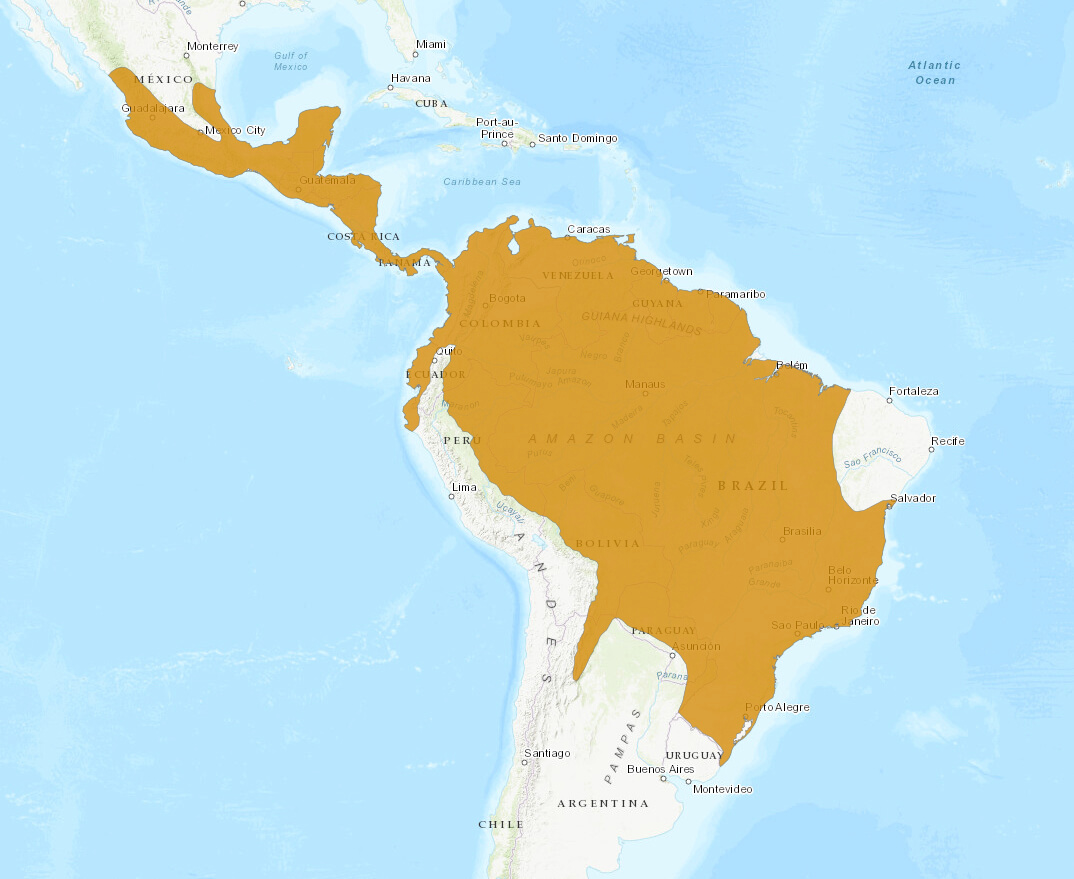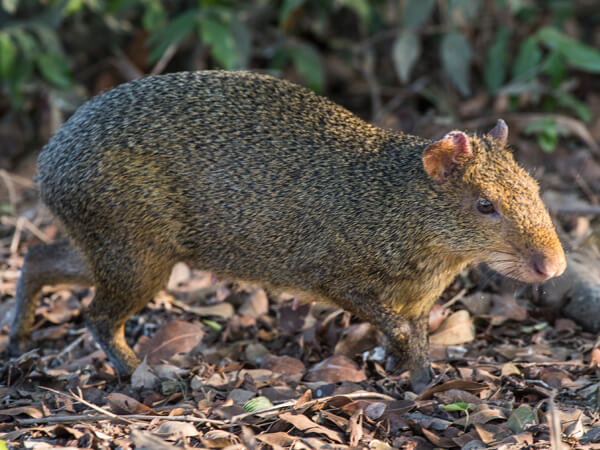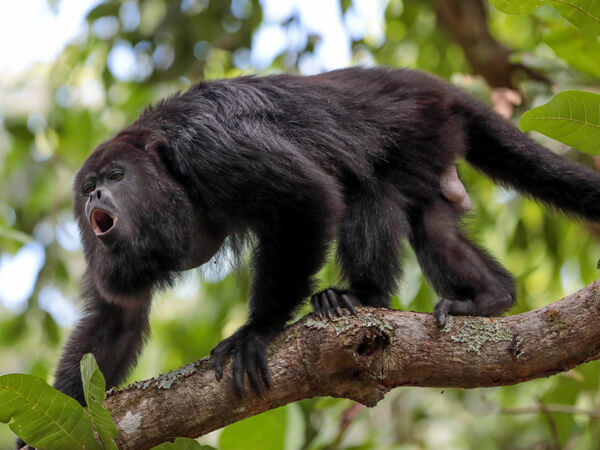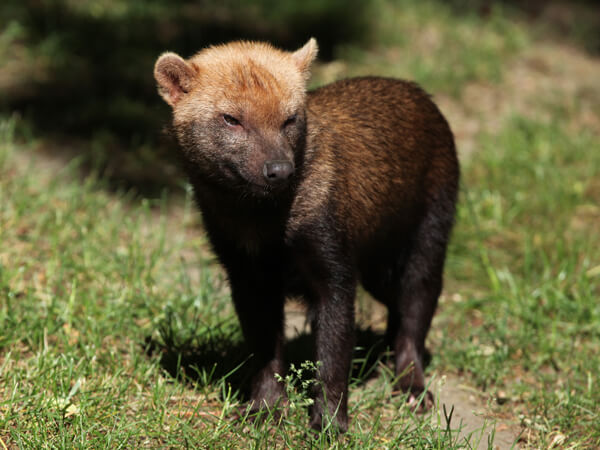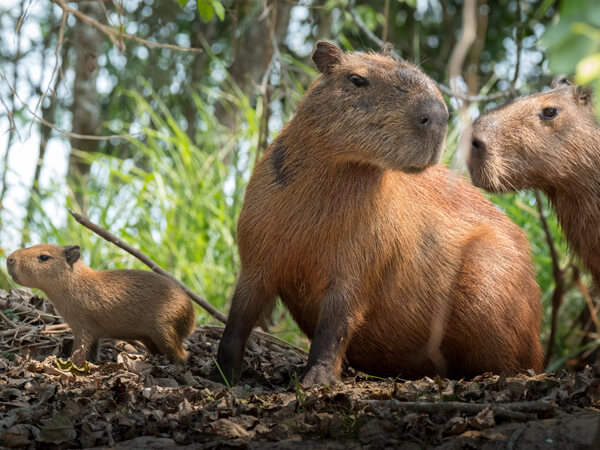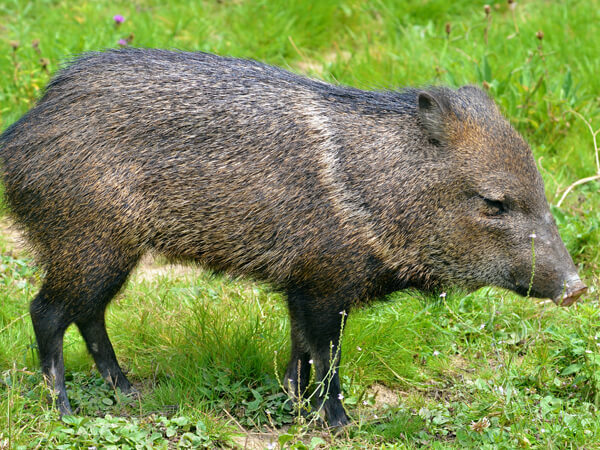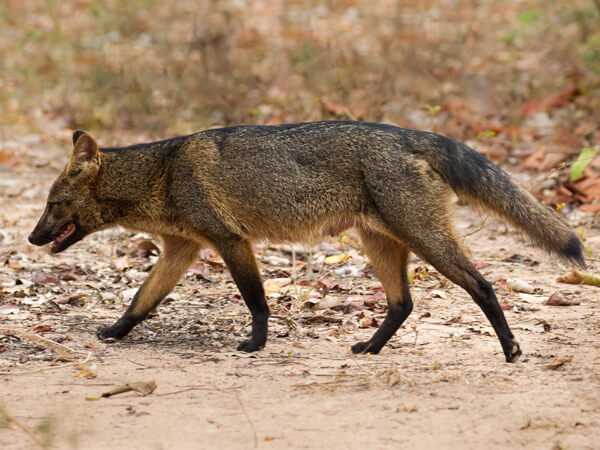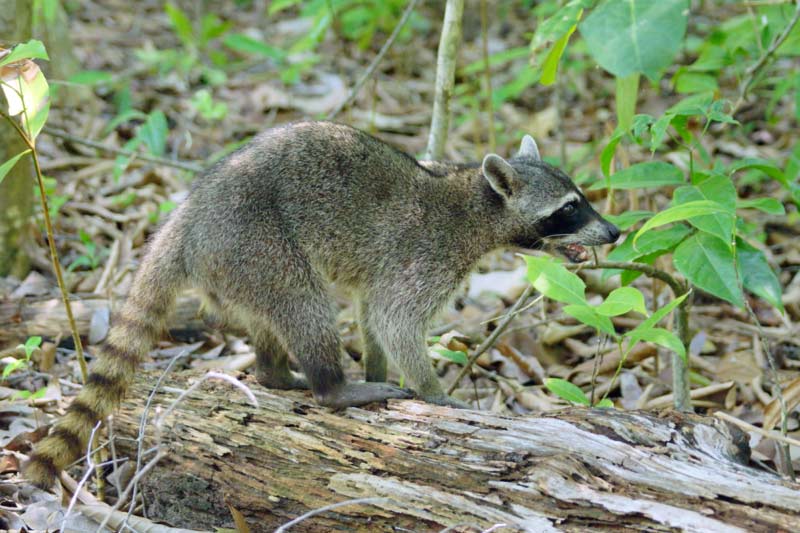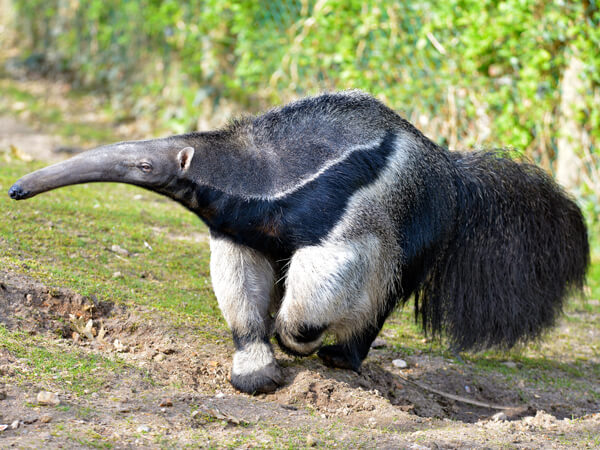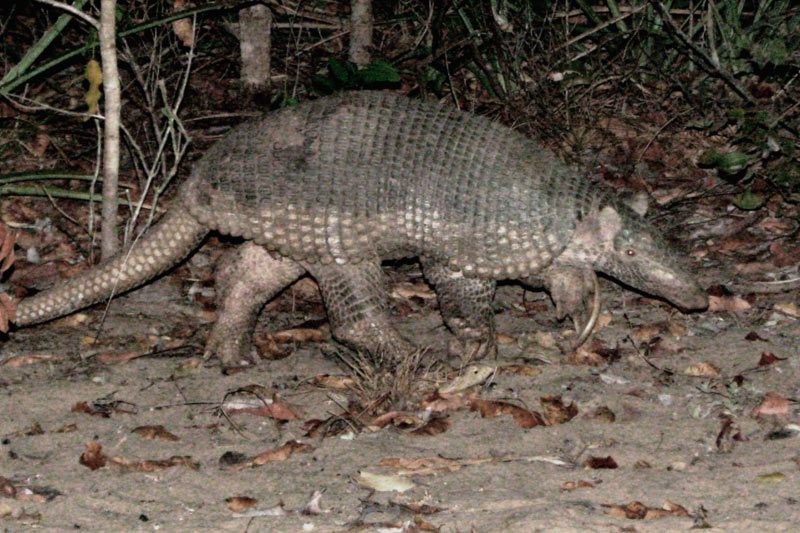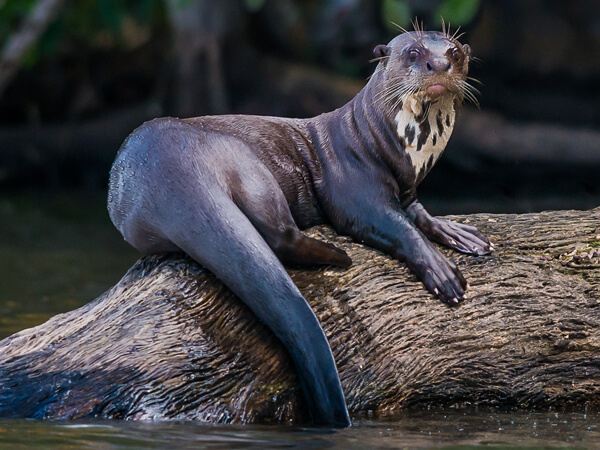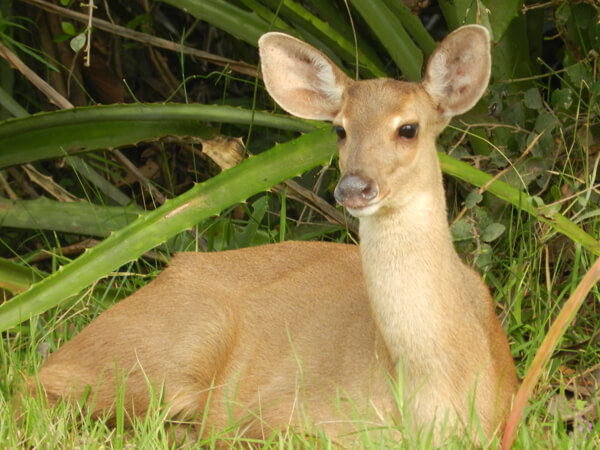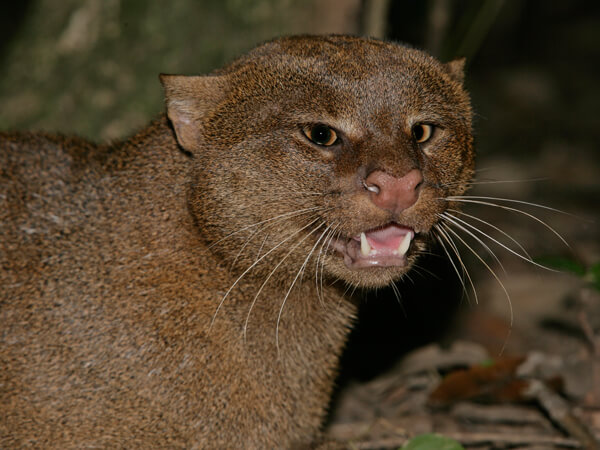The tayra is the sole representative of the genus Eira and the weasel family (otters, badgers and weasels).
Click to learn more
It is often confused with the jaguarondi, with its elongated, darkly colored body. The tayra is an excellent hunter and sometimes aggressive. The name of the species in Tupi-Guarani means “honey eater”.
Distribution
The tayra is found in almost all of Latin America, from the tropical coastal region of Mexico to northern Argentina. It is also present in all the biomes of Brazil throughout the country, except for some parts of the northeast.
Features
The tayra has a long, slender body, with short legs and a long, bushy tail. The body measures between 55 and 71 centimeters, plus the tail, which can measure up to 46 centimeters. It weighs between three and seven kilograms. The color of the coat ranges from dark brown to black throughout the body with a light brown, or grayish, head and neck. Tayras have an orange, or, more typically, a beige stain, that looks like a bib.
Behavior
Tayras are diurnal, with peaks of exertion in the early morning and late afternoon, and occasional nocturnal activity. They are excellent at swimming, running and climbing. They are solitary animals but can be seen in pairs during the breeding season.
Food
Tayras are omnivorous, eating almost anything they can find. They may feed on small and medium-sized vertebrates such as monkeys, the young of sloths, rodents and birds (the predation of domestic cats has also been recorded), as well as fruits, insects and honey. They utilize their sense of smell as their main tool when hunting.
Reproduction
The average length of pregnancy is 65 days, after which females give birth to between one and four cubs, the most common being the birth of twins. The male occasionally helps to raise the young. The cubs remain in the burrows (in trees or on the ground) for around 50 days. After 75 days, the mother begins to permit the rapid exit of cubs from the burrow, bringing in solid foods to supplement their milk diet.
Conservation
Tayras are considered to be of “least concern” by both the national list of ICMBio and the IUCN. They are able to adapt better than other species of the Mustelidae family to degraded environments. But studies still show there will be a decline in their populations in the coming years.
Threats
Deforestation and habitat fragmentation are the main threats to the species, in addition to the conflict with farmers (chicken breeders) and beekeepers.

